Only a few buyers are smart and knowledgeable shoppers when it comes to fabric. Most of us while buying a fabric pick one that feels good, or it has a nice colour, maybe a favourite one, or other petty reasons excluding the actual fruit. Even though there are some tangibles for which such unconscious shopping is justified. But what happens if you shop carelessly for something that is a lifetime investment? You regret the decision for the rest of the year. A person usually buys a Pashmina scarf just once or twice in his entire lifetime. It is an exceptional craft & in ancient times it would only be affordable to queens and the affluent. But now since it is easily available, people easily afford it. As such an authentic Pashmina has become hard to find.
When buying a Pashmina there are a number of things a buyer needs to keep in mind. It is not the colour, design, and size that matters in a Pashmina, but purity, originality, and authenticity.
- Is your Pashmina original?
- How to test my Pashmina?
- Is my Pashmina Authentic?
- How do I know if my Pashmina is pure?
- Where to buy a pure Pashmina from?
- How to tell if a pashmina is real
We answer all these questions, but first, we ask ourselves: why is the purity of Pashmina an issue? Do we always care about the material when we shop for wraps or apparel? We don't! Then why care about the authenticity and originality of Pashmina so much? We tell you why
What is Pashmina?
Every time you go shop for apparel, it is just an in-vogue set of fabrics styled to the latest fashion, which you see in the shop, on TV, on the internet, or elsewhere. However, Pashmina wraps aren't like this. Because Pashmina is an art.
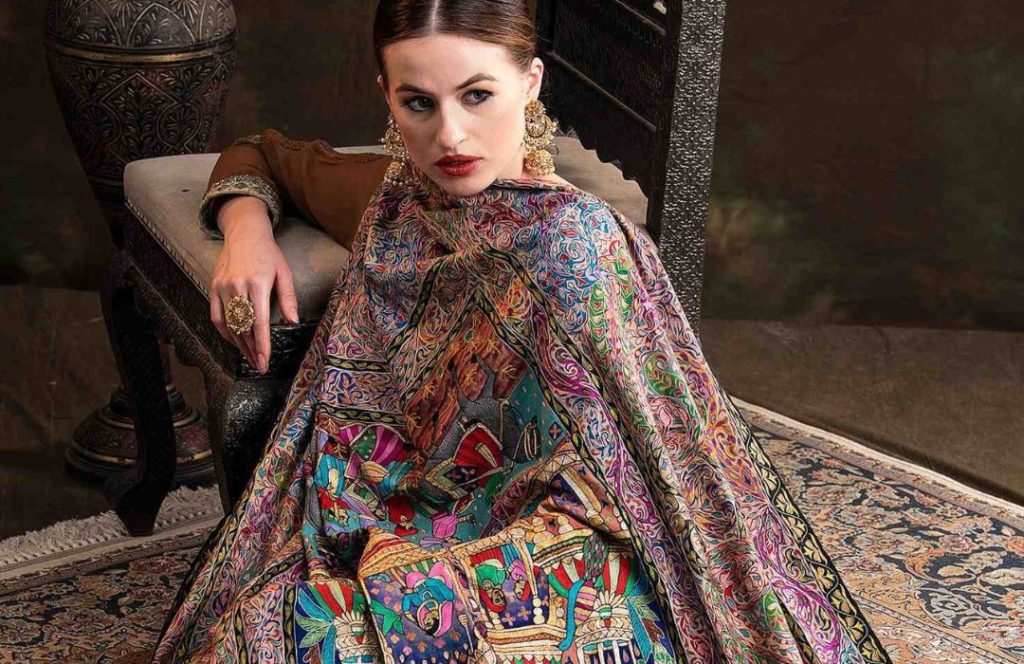
In the 16th century, Kashmir was a place reeling under darkness; the darkness of being economically backward, ignorance, and inequality of caste system and social status. But when a Sufi Saint from Persia visited the valley, these social prejudices and economic issues improved drastically. This was Shah I Hamdan, who not only uplifted the nation morally but economically as well. With a team of more than 700 craftsmen, who were masters of their skills from Persia, China, Egypt, and Russia, Shah I Hamdan managed to train local Kashmiri men and women in some handicrafts for which Kashmir became famous.
Shah E Hamdan and Pashmina
Among the crafts that Shah I Hamdan taught the locals were the following; carpet manufacturing, shawl making, Papier Mache, copper work, silverwork, embroideries, calligraphy, bookbinding, and many more. But one craft that caught the attention of the maximum number of people who opted for it was Pashmina. Pashmina was the art of converting fine Cashmere wool to luxury scarves or shawls. These were so graceful and magical in their making, that royalty and commoners all over the world swooned.
However, it was Zain Ul Abideen, the then king of the Kashmir valley, during whose rule the Pashmina manufacturing units came into existence and the art thrived. The king enlivened the art of Pashmina by encouraging people to make it a cottage industry. This was especially for women. The king offered women the proposal to work from their respective homes. If so, they would be able to earn even in those days when the valley would be completely cut off from the outside world due to enormous amounts of snow (the harsh winter period, which would last for almost 6 months - or even more).
Hence the economy drastically improved and Kashmir became renowned for a number of arts - especially that of Pashmina. Now Kashmiri artisans would be invited to places near and far, nationally and internationally. They would be requested to train local artisans who would take training sessions from them.
What is Pashmina?
Pashmina is a luxurious art form that transforms the fine cashmere wool of Changthangi goats into exquisite shawls, scarves, and wraps. This delicate and labour-intensive process begins with sourcing the wool from these high-altitude goats, which reside in the remote regions of Ladakh in India. The wool, known for its exceptional softness and warmth, undergoes several meticulous stages to become the luxurious Pashmina products cherished worldwide.
Definition and Process
The journey of Pashmina starts with the collection of raw cashmere wool. The Changthangi goats, also known as Pashmina goats, grow a fine undercoat of wool to survive the harsh Himalayan winters. This wool is carefully combed or sheared during the spring season when the goats naturally shed their winter coat. The collected wool is then cleaned and sorted to remove impurities.
The next step is spinning, where the fine wool fibers are handspun into yarn. This process requires immense skill and patience, as the fibers are extremely delicate. Traditional spinning wheels, known as "charkhas," are used by skilled artisans to create the fine yarn that forms the foundation of Pashmina.
Once the yarn is ready, it moves to the weaving stage. Expert weavers use traditional handlooms to interlace the yarn into intricate patterns. This process can take weeks or even months, depending on the complexity of the design. The resulting fabric is then washed and stretched to enhance its softness and drape.
For many Pashmina products, embroidery is an integral part of the artistry. Artisans embellish the fabric with intricate needlework, often using silk or metallic threads. These designs can range from simple motifs to elaborate patterns, adding to the uniqueness and beauty of each piece.
Unique Properties of Pashmina
Pashmina is renowned for its unparalleled softness. The fine fibers of cashmere wool are much softer than regular sheep's wool, making Pashmina products incredibly gentle against the skin. This softness is one of the key factors in determining "How to Tell if a Pashmina is Real." Authentic Pashmina will feel exceptionally smooth and luxurious to the touch.
Another hallmark of Pashmina is its remarkable warmth. Despite being lightweight, Pashmina offers excellent insulation, providing warmth without the bulk. This makes Pashmina shawls and scarves perfect for both chilly winter days and cool summer evenings. The lightweight nature of Pashmina also adds to its appeal, as it drapes beautifully and can be worn comfortably in various styles.
Pashmina’s unique properties of softness, warmth, and lightweight make it a highly sought-after luxury item. However, the market is flooded with imitations, making it crucial for buyers to know "How to Tell if a Pashmina is Real?" Authentic Pashmina products come from trusted sources and exhibit the fine craftsmanship and quality that have been perfected over centuries.
Pashmina is a testament to the rich cultural heritage and skilled artistry of the regions where it is produced. The transformation of raw cashmere wool into luxurious Pashmina shawls, scarves, and wraps involves intricate processes that highlight the dedication and expertise of the artisans. With its unmatched softness, warmth, and lightweight nature, genuine Pashmina remains a symbol of luxury and elegance, cherished by those who appreciate fine craftsmanship and timeless beauty.
Making of a Pashmina Scarf
Perhaps the most meticulous processes are those included in making a Pashmina scarf. Be it a Pashmina shawl, scarf, or stole, the way it is handcrafted is not an ordinary one. A scarf has to roughly pass around 30 stages before it can be sold to its admirers all over the world. As many as 36 individuals, who are masters in a different skill than the previous one, are involved. Thus a Pashmina scarf becomes a family affair. If the man takes care of weaving Cashmere, women might be busy with spinning and other family members would spend time embroidering or calendaring the scarf.
It all starts with the spinning of raw Cashmere by the womenfolk of a family. They spend almost all day cleaning, sorting, smoothening, and spinning raw Cashmere. Women collect raw Cashmere wool from those who acquire it from Ladakh. This practice is as old as Pashmina itself in Kashmir. Women of all ages have spun Cashmere at some point in time. Nowadays this practice is largely done by machines.
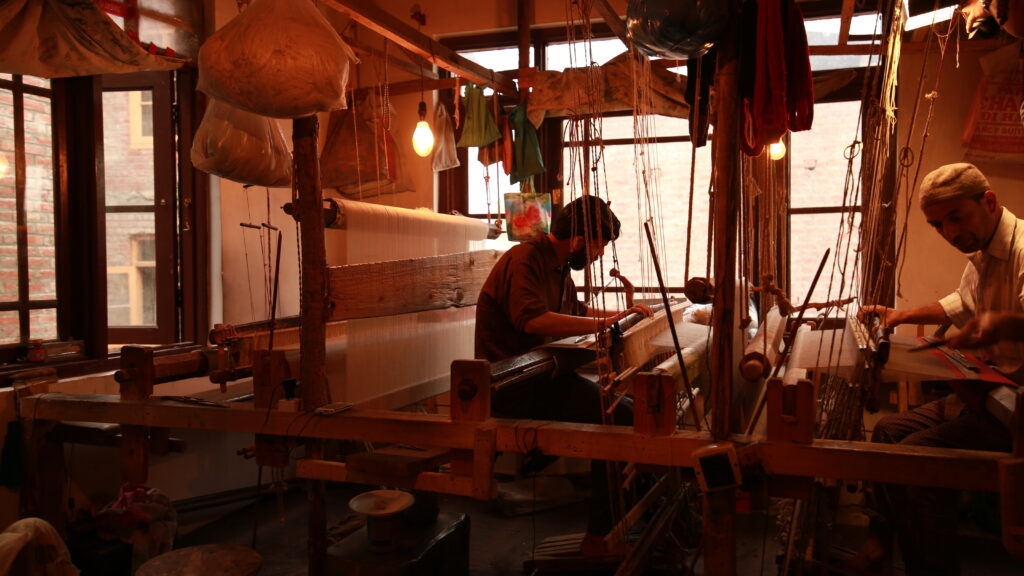
After spinning the wool is sent for weaving where men of the family mount the fine-spun yarn onto a wooden handloom and spin it into wraps, stoles, scarves, and more. This results in the formation of a plain wrap; it can be embellished in any way one can - the most common being embroidery. Hence, these pieces are hand embroidered in a number of embroideries, which are again all traditional to the valley.
Embroideries on Pashmina need to be done by hand as the underlying fabric is too delicate, gentle, and gossamer to bear the burden of thicker machine threads.
Why choose pure?
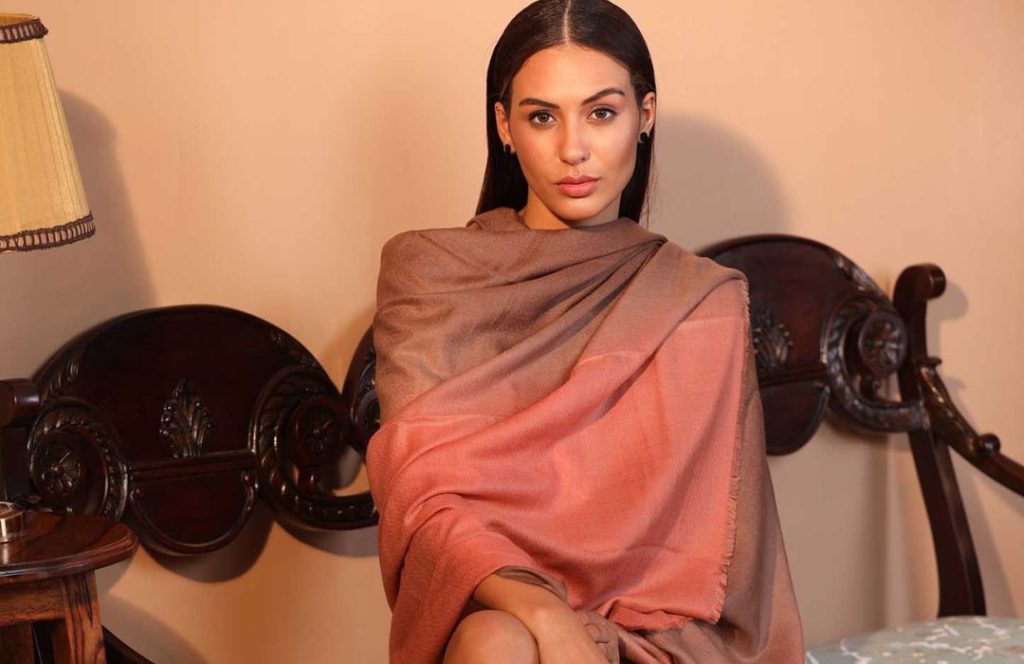
When huge revenues started pouring into the valley on account of the sale of heavenly warm Pashmina scarves, a few traders indulged in unethical practices. Pashmina scarves are handmade, and one scarf can be handwoven in a span of 3-4 days. Hence customers have to wait for a long time before the product comes out of the loom. And if someone needs an embroidered piece, he/she has to wait for years for the product to get embroidered woven, and spun. Hence revenue gets stuck, and makers have to wait for their share for a long time.
Some traders, therefore, gave away to frauds and started making scarves on power looms. The power loom could prepare the same scarves in one hour that the handloom did in 4 days. To make the soft and delicate Cashmere bear the strain of machines, these traders would mix strengthening fibre like nylon, or silk with Cashmere, and then pass it through a machine. As such more quantity and less quality Pashmina scarves were manufactured. And thus finding a pure Pashmina scarf became a challenge, as well as a luxury to possess.
The Importance of Identifying Real Pashmina
Identifying real Pashmina is crucial for several reasons, including its economic value and cultural significance. Understanding "How to Tell if a Pashmina is Real" can help buyers make informed decisions and appreciate the true worth of this luxurious fabric.
Economic Value:
Real Pashmina commands a high price due to its exceptional quality and the labour-intensive processes involved in its production. From sourcing the fine cashmere wool of Changthangi goats to the intricate weaving and embroidery, each step requires skilled craftsmanship and considerable time. This results in a product that is not only beautiful but also durable and valuable. However, the market is flooded with imitations and synthetic substitutes that are sold as genuine Pashmina.
Buying fake Pashmina can lead to significant financial loss. Consumers may pay a high price for a product that lacks the unique qualities of real Pashmina, such as its softness, warmth, and lightweight nature. These imitations often deteriorate quickly, lacking the longevity and comfort of genuine Pashmina. Therefore, knowing "How to Tell if a Pashmina is Real" is essential to ensure that the investment is worthwhile and that the buyer receives a product that matches the price they pay.
Cultural and Sentimental Value:
Beyond its economic worth, Pashmina holds deep cultural and sentimental significance, particularly in regions like Kashmir and Ladakh. Pashmina has been a part of these cultures for centuries, symbolizing elegance, luxury, and heritage. The art of Pashmina weaving is passed down through generations, with artisans dedicating their lives to perfecting their craft. Each Pashmina piece is a testament to this rich cultural heritage and the meticulous skill of the artisans who create it.
Authenticity matters because real Pashmina represents more than just a fabric; it embodies tradition, history, and cultural identity. For many, owning a genuine Pashmina shawl or scarf is a way to connect with this heritage and honour the craftsmanship of the artisans. Fake Pashmina, on the other hand, undermines this cultural value and diminishes the recognition and respect that genuine Pashmina deserves.
Moreover, Pashmina often carries sentimental value as it is commonly given as a gift during significant life events such as weddings, festivals, and other celebrations. A genuine Pashmina piece is not only a luxurious gift but also a meaningful one, symbolizing warmth, care, and appreciation. In contrast, a fake Pashmina can tarnish these sentiments, leaving the giver and receiver disappointed.
Identifying real Pashmina is essential to preserve its economic, cultural, and sentimental value. Understanding "How to Tell if a Pashmina is Real" ensures that buyers can make informed choices, support genuine craftsmanship, and appreciate the true essence of this luxurious fabric.
The Deception
Imagine investing in a $2000-4000 shawl and then coming to know that it is not Pure Pashmina. How much effort was wasted? The people who acquire the raw fibre from Ladakh, the women who spun it, the men who had to weave it on the handloom, and the embroiderers who would feel it a pleasure to embroider handmade Pashmina, all feel cheated when greedy vendors make scarves on power looms. Hence the need to buy a pure Pashmina rose. Ardent patrons of the art became more and more active in search of pure shawls. They started questioning the sellers, and looking for flaws in their already purchased pieces, but didn't know how to spot a fake Pashmina.
So we decided to write this article to assist the general audience in finding the purest, most authentic and certified Pashmina for them, and enjoy its luxurious warmth and graceful demeanour it exudes.
How can you tell a real Pashmina? | How to tell if a pashmina is real
Real Pashmina, possesses distinctive qualities that can help identify its genuineness. A true pashmina is famous for its exceptional softness, lightweight feel, and exquisite warmth. This stems from the unique climate conditions and natural fibers of the Himalayan region. When examining a pashmina, one has to look for a number of factors. Authentic pashminas often display handcrafted designs, intricate patterns, and fine embroidery. Hence they showcase the artisanal craftsmanship that has been passed down through generations. While assessing its authenticity, consider the source, price, and reputation of the seller, as well as any certification or labelling that might accompany the product.
Here are a few factors to notice when buying a Pashmina:
Did the seller present to you a Certificate?
If your seller isn't giving you a scarf with the GI tag on it, it can still be pure and original, but on one condition; he should be able to present to you a certificate. Craft Development Institute (CDI) Srinagar is an organization that issues certificates for pure Pashminas on the basis of purity and authenticity. It measures a number of things like micron conformation, weight, purity, handmade certification, and more. If a seller can produce this certificate for a scarf, then the piece is an authentic Pashmina.
Look for Variety in Pashmina scarves
Even though this might not always be the case, if a seller has a large variety of Pashminas scarves, or has a large number of customers who trust him and speak well of his quality products, chances are that he is an authentic dealer. This is because a large number of manufacturers will put their trust in an authentic vendor. As such, readily sell him their painstakingly produced authentic Pashmina pieces.
On the other hand, a seller who isn't authentic might not be able to attract more manufacturers because of the lack of trust, as well as won't have a large customer base.
An Authentic Pashmina scarf can't be too cheap
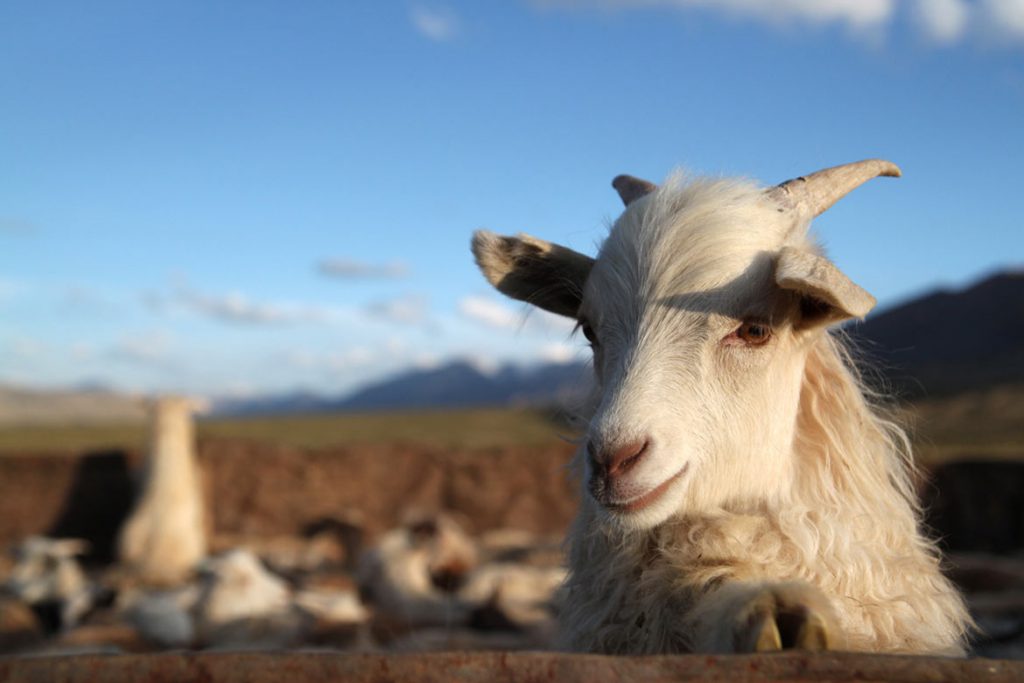
Pashmina is the art of handcrafted luxury fabric out of fine Cashmere wool, which an exotic Pashmina goat grows over its sensitive areas like belly and throat. It is this wool that makes the goat survive a harsh -40 degree temperature. This raw wool then comes to Kashmir. There artisans spin and weave it into luxury accessories and apparel. The entire process is time-consuming, painstaking, and patience-testing, and consumes a lot of labour and effort. Hence, an authentic Pashmina is a little higher on the price scale.
Similarly, there are sellers who, to make the customers happy, sell their scarves at a low price, which is too good to be true for a Pashmina scarf. These are sellers of fake pieces who sell either pure wool in place of Pashmina or mix Pashmina and silk and sell it as a pure piece. Always make it a point to thoroughly check the authenticity of the seller as well as the scarf that he is selling you.
Also read: THE TRAIL OF INDIA’S CASHMERE GOAT MEN
Uneven Weave and Eyelash Fringes
When buying a pure Pashmina, don't look for perfection, because a handmade product will never be even in texture. The weave should be rather gauzy, an open weave because fine Cashmere fibre cannot tolerate high tension. If you hold a real Pashmina up to the light it should show the mastery of the ‘hand’ of the weaver, which means the weave should be uneven. Shuttle speeds of power loom tend to tear the fragile fibre. Hence to weave an authentic Pashmina, a traditional Kashmiri wooden loom has to be used.
For the same reason, a genuine & real pashmina should never have tasselled edges but a simple ‘eyelash’ fringe, because the fibre is not strong enough to twist and pull in that fashion.
Look for the (Geographical Indication) GI tag on a Pashmina Scarf
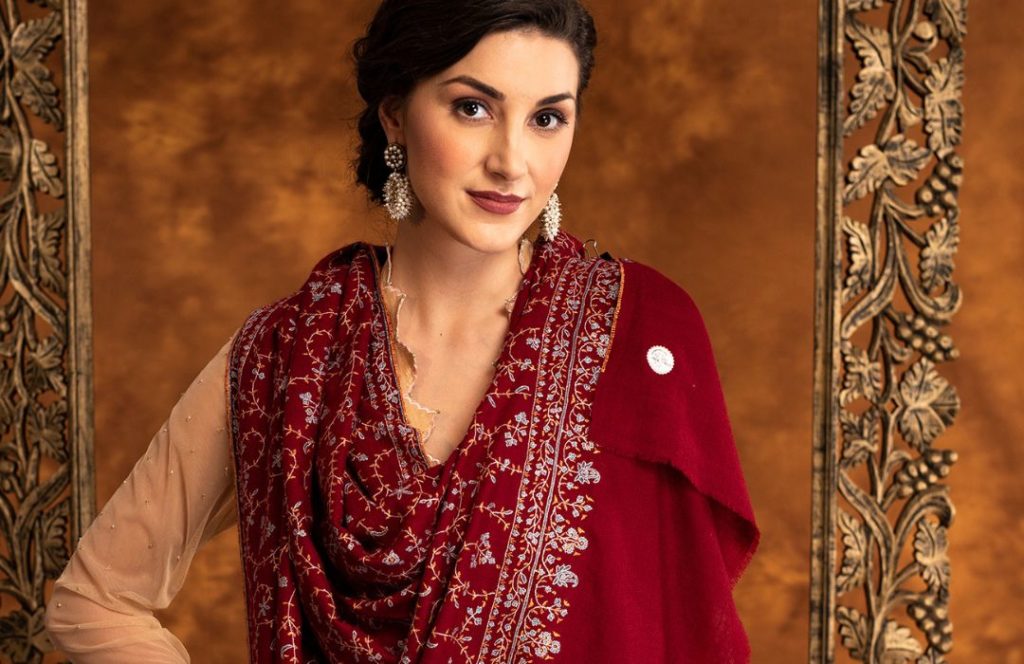
To preserve the purity of the art of Pashmina making, the govt of Jammu and Kashmir has rewarded pure Pashmina with a GI tag.
GI (Geographical Indication) is a mark of purity that distinguishes pure Pashmina from its fake copies. It is similar to a stamp, located at the corners of a scarf. If a scarf shawl or any Pashmina product contains this stamp, it is 100% pure and authentic Pashmina of Kashmir.
It is quintessential to have good information on Pashmina quality and pricing before you start shopping for the cherished luxury piece, which comes straight from Paradise-Kashmir. It is, after all, the dream of women all over the world to own just one piece of Pashmina. Hence we made sure it is of the best quality
Own a Pashmina already? Test your Pashmina at home to check purity.
5 tests to check your Pashmina purity at home
Identifying pure Pashmina can be challenging because there are many imitations and blends in the market. If you already own a Pashmina, and now have doubts about its purity, we got solutions. There are a few purity tests that one can conduct at home. Keep in mind that a combination of these methods is often the most reliable way to confirm purity. Here are five essential tests that one can easily do at home to confirm the purity of their Pashmina.
Fibre Thickness

Pure Pashmina fibres are extremely fine, typically measuring between 12 to 15 microns in diameter. You can use a microscope to examine the fibres in a small section of the fabric. You can take your shawl or scarf to a nearby lab and get it professionally tested too. If the fibres are significantly thicker, it may indicate that the product is not pure Pashmina.
The Burn Test
This test involves burning a small piece of the fabric. Pashmina is made from animal fibres and will smell like burnt hair when ignited. It will also leave a fine ash residue. Synthetic materials or blends tend to produce different smells and may not leave ash behind.
The Touch Test
Pure Pashmina is incredibly soft to the touch. Run your fingers across the fabric's surface and see if it feels exceptionally soft and luxurious. Synthetic or blended materials often lack this softness.
The Price and Source
Authentic Pashmina is a premium product, and the price should reflect its quality. If you purchased this Pashmina shawl or scarf at a significantly lower cost than what is typical for genuine Pashmina shawls or scarves. Additionally, if you have purchased it from reputable sources or sellers who provided certification of authenticity, then you need not worry.
Irregular Weave of Pashmina
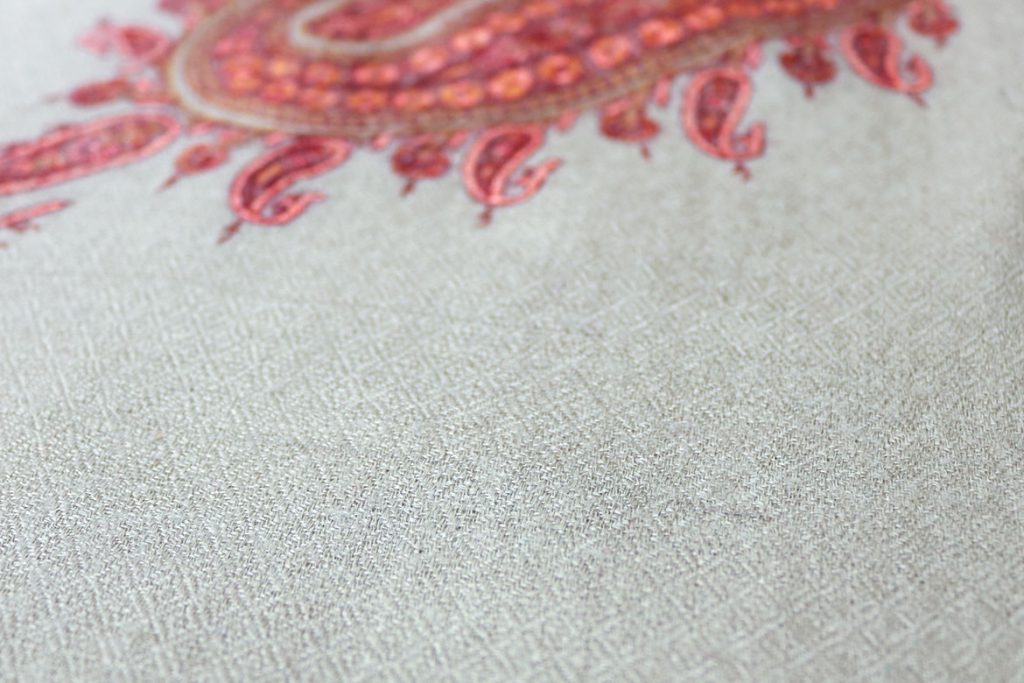
Pure Pashmina fabric often exhibits an irregular or slightly textured weave, and this unique characteristic is one of the hallmarks of authentic Pashmina. A sequenced and regular weave can be done by a machine. Authentic Pashmina shawls and scarves are often handwoven by skilled artisans. The handmade nature of the weaving process can result in slight irregularities in the weave pattern. These imperfections are not considered flaws but rather a testament to the craftsmanship and authenticity of the product.
Common Myths and Misconceptions
Pashmina, known for its luxurious feel and exquisite craftsmanship, often falls prey to various myths and misconceptions. These misunderstandings can mislead potential buyers and detract from the true value of genuine Pashmina. Let’s address and debunk some common myths while providing accurate information to help you understand "How to Tell if a Pashmina is Real?"
Myth 1: Pashmina and Cashmere are the Same
A widespread misconception is that Pashmina and cashmere are interchangeable terms. While both are used interchangeably, Pashmina refers to the art of converting cashmere wool to luxury Pashmina shawls, This wool is sourced from the Changthangi goats of the Himalayas. The art of Pashmina encompasses the intricate processes of weaving this raw wool into luxurious shawls, scarves, and embroidering and embellishing these. Understanding this distinction is crucial in learning "How to Tell if a Pashmina is Real."
Myth 2: Pashmina is Always Expensive
While genuine Pashmina products can be pricey due to the labour-intensive process and high-quality materials, not all expensive shawls or scarves are authentic Pashmina. The cost alone should not be the sole indicator of authenticity. Buyers should look for specific markers of genuine Pashmina, such as the feel, craftsmanship, and sometimes even certifications, rather than relying solely on price as a determinant.
Myth 3: All Pashmina is Handwoven
Another misconception is that all Pashmina products are handwoven. While traditional Pashmina shawls are indeed crafted by skilled artisans using handlooms, some modern Pashmina products may be machine-woven. This does not necessarily mean they are of inferior quality, but for those seeking traditional craftsmanship, it is essential to confirm the weaving method. Knowing "How to Tell if a Pashmina is Real" involves understanding these nuances and being able to identify handwoven pieces.
Myth 4: Pashmina is Not Warm
Due to its lightweight nature, some people believe that Pashmina does not provide adequate warmth. In reality, Pashmina’s fine fibers offer excellent insulation, making it exceptionally warm without the bulk. This unique property allows Pashmina to be both lightweight and highly effective in keeping the wearer warm, debunking the myth that it lacks warmth.
Myth 5: Pashmina is Too Delicate to Wear Regularly
While Pashmina is indeed delicate and requires careful handling, it is not too fragile for regular use. With proper care, such as gentle hand washing and careful storage, Pashmina products can maintain their beauty and functionality for many years. This misconception often deters people from investing in Pashmina, but knowing how to care for it properly is part of "How to Tell if a Pashmina is Real."
Myth 6: Pashmina Only Comes in Plain Designs
Some people believe that Pashmina shawls and scarves only come in plain, solid colours. However, Pashmina can be found in a variety of designs, including intricate embroidery, patterns, and even modern prints. The versatility in design is part of what makes Pashmina a cherished accessory in both traditional and contemporary fashion.
By addressing these common myths and providing accurate information, we can better appreciate the true value of Pashmina. Recognizing "How to Tell if a Pashmina is Real?" involves understanding its origins, craftsmanship, and unique properties, which distinguish it from other fabrics and ensure its place as a timeless and luxurious material.
Conclusion
In conclusion, determining the authenticity of a Pashmina is a matter of careful observation and a series of tests that can help you make an informed decision. The allure of Pashmina lies in its exceptional softness, lightweight warmth, and timeless elegance, making it a sought-after addition to any wardrobe. However, with the market flooded with imitations and blends, it becomes crucial to distinguish genuine Pashmina from the rest.
Investing in a real Pashmina not only provides you with a luxurious and timeless accessory but also connects you to a rich cultural heritage and supports the skilled artisans who craft these exquisite pieces. In your quest for authenticity, trust your senses and seek out reputable sources to experience the true beauty of pure Pashmina.
Also read: WHY IS THE PASHMINA VERY THIN YET VERY WARM?